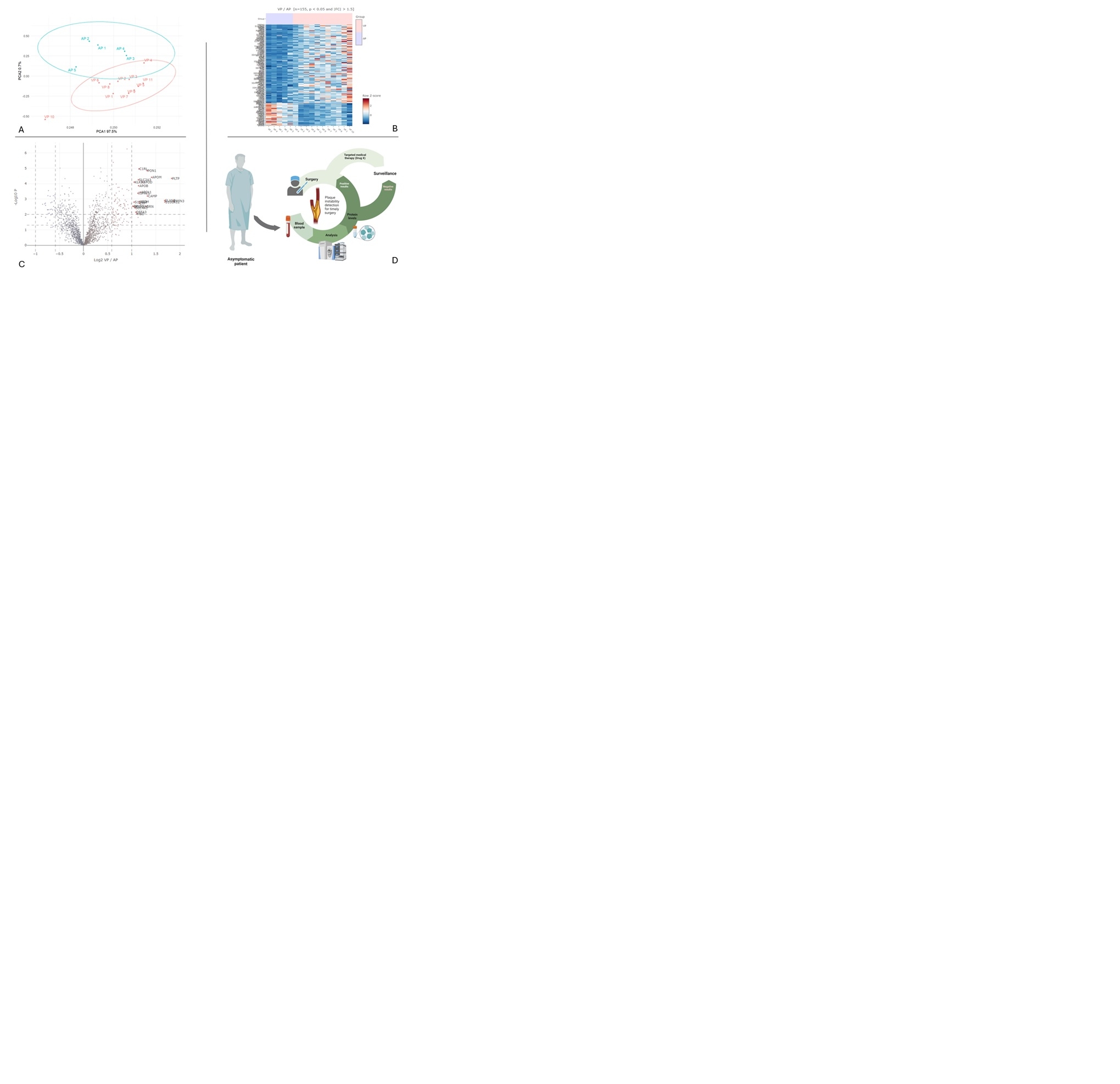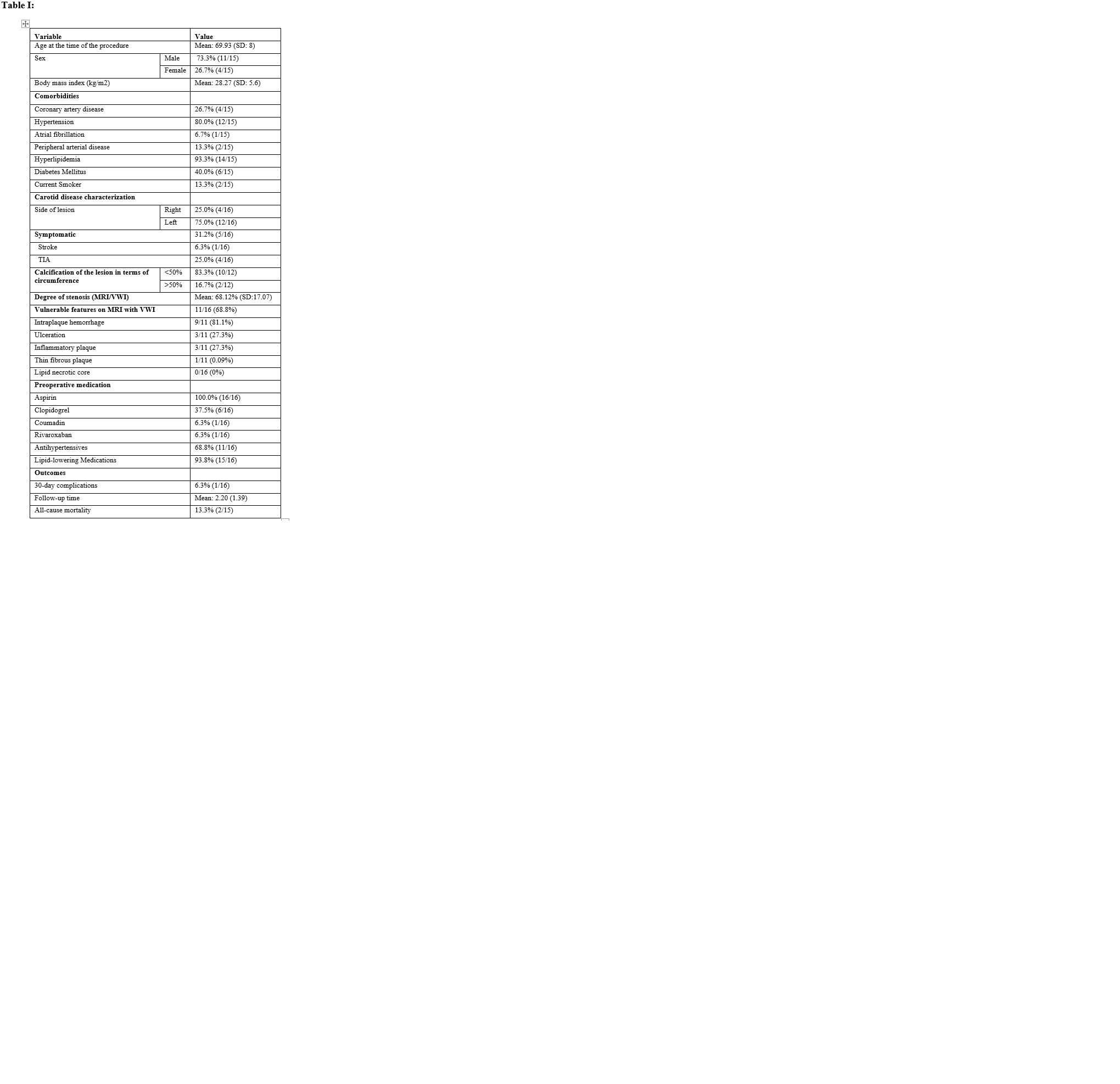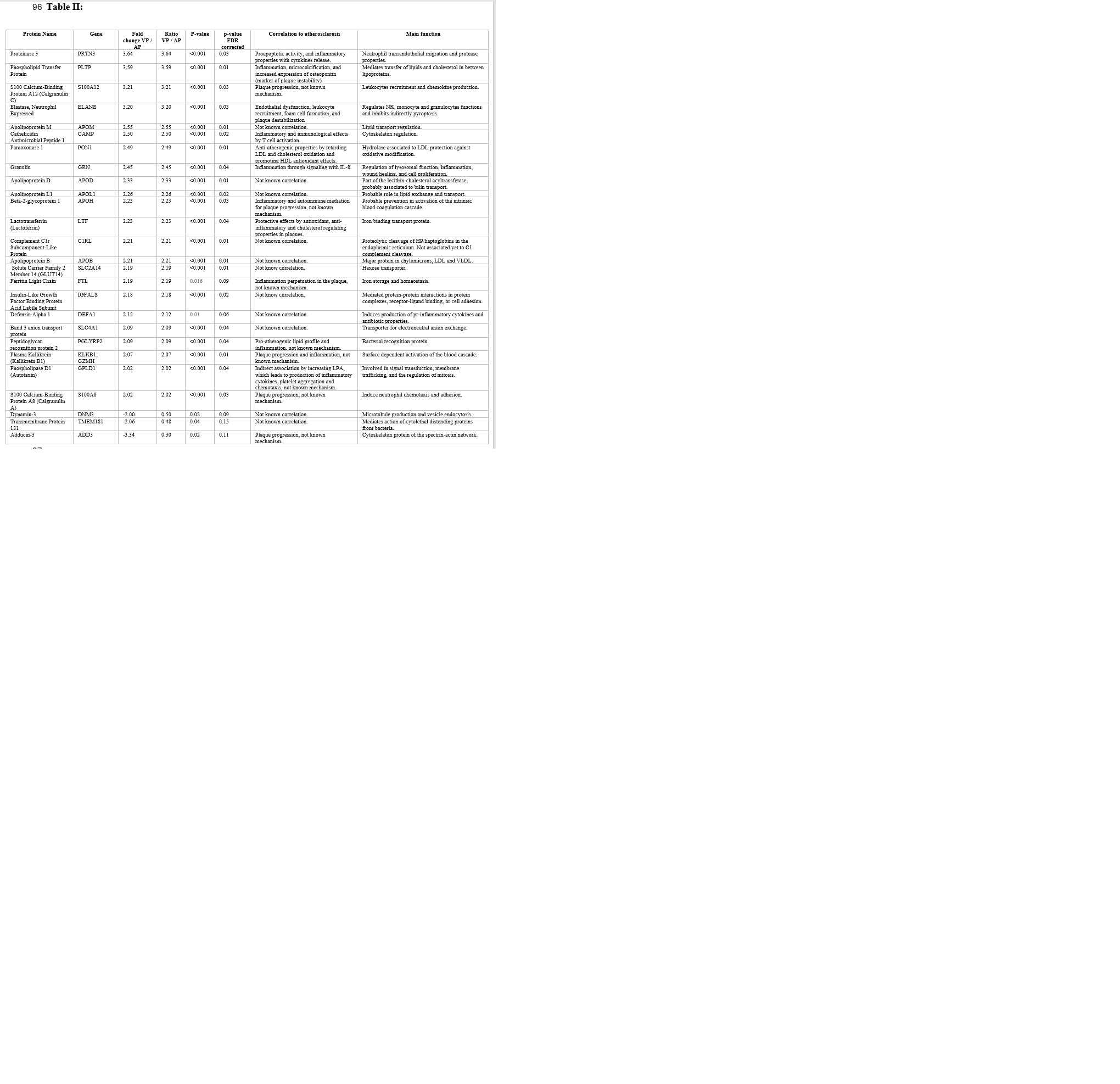Final ID: WP338
Proteomic Analysis of Carotid Artery Plaques With and Without Vulnerable Features on Magnetic Resonance Angiography with Vessel Wall Imaging: A Pilot Study
Abstract Body: Introduction: Extracranial carotid artery pathology accounts for 15-20% of ischemic strokes. Advancements in magnetic resonance angiography (MRA) with vessel wall imaging (VWI) have enabled the identification of vulnerable plaques, aiding in risk stratification for neurovascular events. This pilot study aimed to identify proteins in plaques with and without vulnerable features on MRA with VWI.
Hypothesis: There is a differential proteomic profile of vulnerable and non-vulnerable, thus, these can serve as potential biomarkers for disease progression, stroke prevention, and therapeutic targets.
Methods: Consecutive patients undergoing carotid endarterectomy (CEA) were included in the study cohort with pre-operative MRA with VWI. A retrospective chart review was conducted to extract pertinent clinical data including cardiovascular risk factors and medications. The proteomic analysis involved Tandem Mass Tag (TMTpro) labeling of peptides, basic pH HPLC fractionation, and NanoLC-tandem mass spectrometry.
Results: A total of sixteen plaques were retrieved from fifteen patients. There were 73.3% male patients. The most common comorbidities were hyperlipidemia (93.3%) and hypertension (80%). 31.2% of patients had symptomatic disease. Eleven plaques were vulnerable in preoperative MRI with VWI. From those, intraplaque hemorrhage was the most common feature (81.1%). Proteomic analysis revealed 23 relevant proteins significantly elevated in vulnerable plaques, including Proteinase 3 (PRTN3), Phospholipid Transfer Protein (PLTP), and S100 Calcium-Binding Protein A12 (S100A12), with increased abundance exceeding two-fold changes or above (P<0.001). Conversely, three proteins exhibited reduced abundance in vulnerable plaques including Dynamin-3 (DNM3), Transmembrane Protein 181 (TMEM181), and Adducin-3 (ADD3) (P<0.05). All results are summarized in Figure 1A-C and Table I and II.
Conclusion: This study contributes to the understanding of protein biomarkers associated with carotid plaque vulnerability, offering insights into disease progression, stroke prevention, and identification of potential therapeutic targets (Figure 1D). Furthermore, these patients could benefit from early surgical intervention if these biomarkers were to be detected. We present a comprehensive study of multiple proteins with significant bioavailability in explanted plaque specimens that can serve as a foundation for identifying blood biomarkers for future validation studies.
Hypothesis: There is a differential proteomic profile of vulnerable and non-vulnerable, thus, these can serve as potential biomarkers for disease progression, stroke prevention, and therapeutic targets.
Methods: Consecutive patients undergoing carotid endarterectomy (CEA) were included in the study cohort with pre-operative MRA with VWI. A retrospective chart review was conducted to extract pertinent clinical data including cardiovascular risk factors and medications. The proteomic analysis involved Tandem Mass Tag (TMTpro) labeling of peptides, basic pH HPLC fractionation, and NanoLC-tandem mass spectrometry.
Results: A total of sixteen plaques were retrieved from fifteen patients. There were 73.3% male patients. The most common comorbidities were hyperlipidemia (93.3%) and hypertension (80%). 31.2% of patients had symptomatic disease. Eleven plaques were vulnerable in preoperative MRI with VWI. From those, intraplaque hemorrhage was the most common feature (81.1%). Proteomic analysis revealed 23 relevant proteins significantly elevated in vulnerable plaques, including Proteinase 3 (PRTN3), Phospholipid Transfer Protein (PLTP), and S100 Calcium-Binding Protein A12 (S100A12), with increased abundance exceeding two-fold changes or above (P<0.001). Conversely, three proteins exhibited reduced abundance in vulnerable plaques including Dynamin-3 (DNM3), Transmembrane Protein 181 (TMEM181), and Adducin-3 (ADD3) (P<0.05). All results are summarized in Figure 1A-C and Table I and II.
Conclusion: This study contributes to the understanding of protein biomarkers associated with carotid plaque vulnerability, offering insights into disease progression, stroke prevention, and identification of potential therapeutic targets (Figure 1D). Furthermore, these patients could benefit from early surgical intervention if these biomarkers were to be detected. We present a comprehensive study of multiple proteins with significant bioavailability in explanted plaque specimens that can serve as a foundation for identifying blood biomarkers for future validation studies.
More abstracts on this topic:
Association Between Meeting Physical Activity Time-Intensity Guidelines and Calf Muscle Oxygen Saturation in Patients with Symptomatic Peripheral Artery Disease
Gardner Andrew, Montgomery Polly, Wang Ming, Xu Xifei
Carotid Body Paraganglioma Causing Arterial Splaying: A Case Report and Surgical Management of a Vascular Neck MassKumar Nishal, Garlapati Sameer Krishna Prasad, Konakanchi Venkata Sai Bhargav Pradeep
Readers' Comments
We encourage you to enter the discussion by posting your comments and questions below.
Presenters will be notified of your post so that they can respond as appropriate.
This discussion platform is provided to foster engagement, and simulate conversation and knowledge sharing.
You have to be authorized to post a comment. Please, Login or Signup.
Rate this abstract
(Maximum characters: 500)



